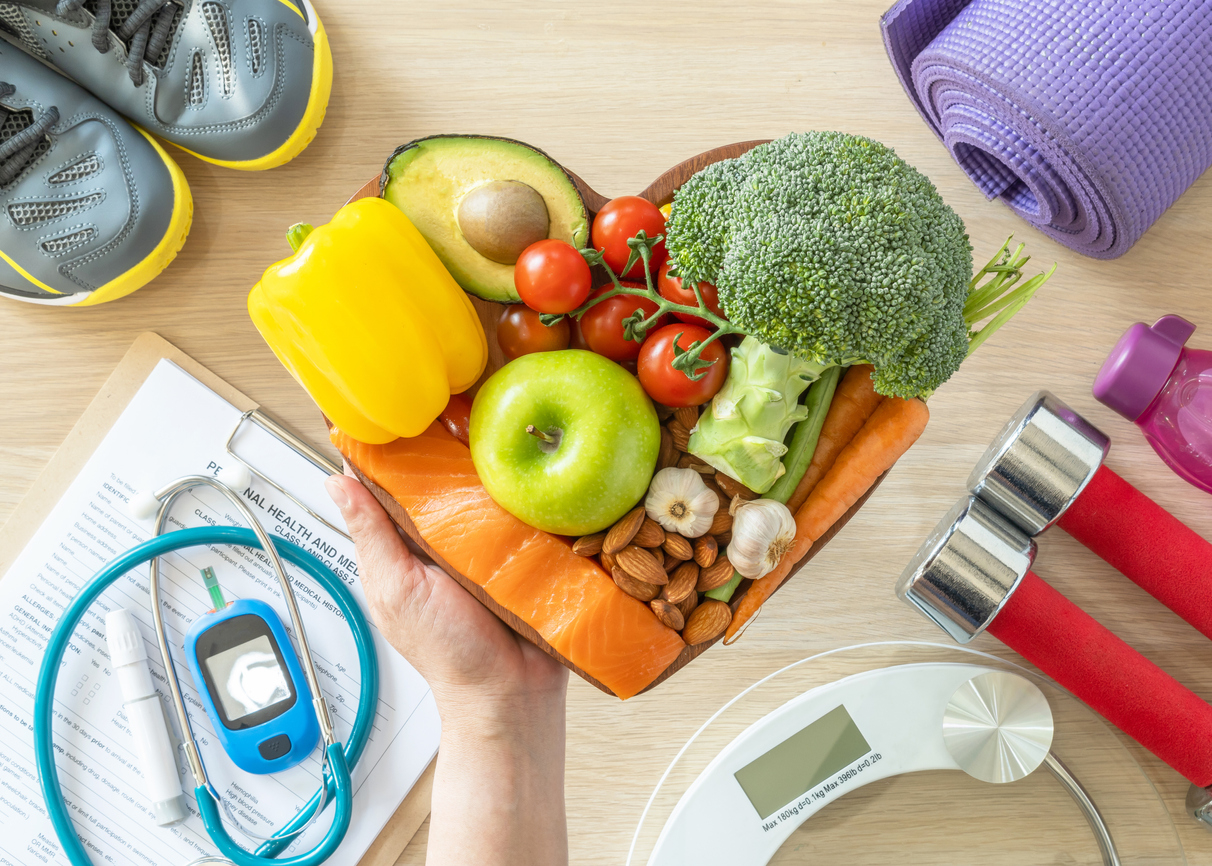Commitment + Clinical Leadership = Better Outcomes

Low-Cholesterol Food Ideas
Hypertension, also known as high cholesterol, is a common issue that affects about 1/3 of adults in the United States.1
High cholesterol poses no visible symptoms, and many people are unaware that they have high cholesterol. However, a blood test can determine if someone’s cholesterol levels are where they should be.
Here’s more information about cholesterol and why low cholesterol is important for your health, as well as some low-cholesterol food ideas.
What is Cholesterol?
Cholesterol is a lipoprotein that is a waxy substance and made of fat and protein. All of your cells have cholesterol in them.2
Your liver is the primary source of cholesterol in your body and makes about 85% of the cholesterol found in the blood. The cholesterol made by the liver aids the body in making hormones, building cells, making vitamins, and digesting certain foods.3
You have both good (HDL) and bad (LDL) cholesterol in your body. Your liver is responsible for maintaining the HDL cholesterol. Your diet and lifestyle also play a role in the fluctuations of both the HDL and LDL cholesterol levels.4
Why is Low Cholesterol Important?
Cholesterol levels are a good indicator of heart health. It’s important to make sure your cholesterol levels are maintained to ensure you’re not at risk for heart disease and other health issues.
HDL cholesterol, the “good” cholesterol, helps to remove the LDL, or “bad” cholesterol, from your body. Higher levels of HDL cholesterol are associated with a healthy heart and a lower risk of heart disease.5
High levels of LDL cholesterol leads to a buildup of this waxy substance in your blood vessels, which causes the passageways to narrow. If a clot forms and gets stuck in these spaces, it can cause a heart attack or stroke because the blood is unable to travel to the heart or brain.
Lifestyle changes such as exercising, eating a balanced diet, and avoiding smoking are known to lower LDL cholesterol and increase HDL cholesterol levels. However, if people are incapable of getting their cholesterol levels under control, medical professionals will often prescribe cholesterol medication.
Certain factors aside from diet can increase your risk of high cholesterol including type 2 diabetes, obesity, and a family history of high cholesterol. Age also increases your risk for high cholesterol because as you age, your body cannot clear cholesterol from the blood as efficiently.6
Low-Cholesterol Foods
Foods high in saturated fats and cholesterol can increase your cholesterol levels. However, eating a well-balanced diet can help you maintain healthy cholesterol levels.
Different foods can help to lower your cholesterol levels in various ways.7 For example, soluble fiber binds to cholesterol in the digestive system and takes it out of the body. Foods with polyunsaturated fats work to directly lower LDL levels.
Here are 5 easy ways to incorporate low-cholesterol foods into your diet and help manage your cholesterol levels.
- Oats. Oatmeal or oat-based cereal, such as Cheerios, are a good food choice to lower your cholesterol levels. The fiber not only benefits you by removing cholesterol, but it’s beneficial for your digestive system as well. Read the labels on oats, such as pre-packaged oatmeal, because they often contain a lot of sugar that can negate the health benefits.7
- Beans. Beans and other legumes are another great choice for a low-cholesterol food. Beans are high in protein, fiber, and minerals.8 Some studies showed that eating a ½ cup of beans a day was effective at lowering LDL cholesterol.9 Other legume choices include lentils and peas.
- Fruits. As with many whole foods, fruits are another great addition to your diet with many health benefits, including maintaining healthy cholesterol levels. Apples, pears, grapes, strawberries, and citrus fruits contain pectin, which is a fiber that can lower cholesterol.10
- Fatty fish. Fatty fish is a great source of omega-3 fatty acids, which are heart healthy. Omega-3s are known to increase HDL cholesterol and reduce inflammation. Replacing fatty red meats with a fish such as salmon, tuna, or swordfish can help you reap these health benefits.8
- Vegetables. Non-starchy vegetables are high in protein and fiber. Vegetables can also help to decrease triglycerides, which are another risk factor in developing heart disease. Try adding asparagus, broccoli, or leafy greens to your meals each day.4
Lower Your Cholesterol Today
When it comes to healthy, low-cholesterol foods, there are many different options to choose from. Try finding a couple that you like and add them to your meals each day.
If you or a loved one are concerned about your cholesterol levels or risk of heart disease, talk with a medical professional.
Saber Healthcare is an organization dedicated to providing consultant services to long term care providers. This article is for informational purposes and is not meant to be seen as professional advice. Please consult with a medical expert before relying on the information provided.
Sources
- https://www.cdc.gov/cholesterol/index.htm.
- https://www.saberhealth.com/news/blog/maintain-healthy-cholesterol-levels.
- https://www.cdc.gov/cholesterol/about.htm.
- https://health.clevelandclinic.org/foods-that-lower-cholesterol/.
- https://www.mayoclinic.org/diseases-conditions/high-blood-cholesterol/in-depth/hdl-cholesterol/art-20046388#:~:text=High%2Ddensity%20lipoprotein%20(HDL),lower%20risk%20of%20heart%20disease.
- https://www.cdc.gov/cholesterol/risk_factors.htm.
- https://www.health.harvard.edu/heart-health/11-foods-that-lower-cholesterol.
- https://www.healthline.com/nutrition/13-foods-that-lower-cholesterol-levels.
- https://pubmed.ncbi.nlm.nih.gov/24710915/.
- https://www.webmd.com/cholesterol-management/ss/slideshow-cholesterol-lowering-foods.
